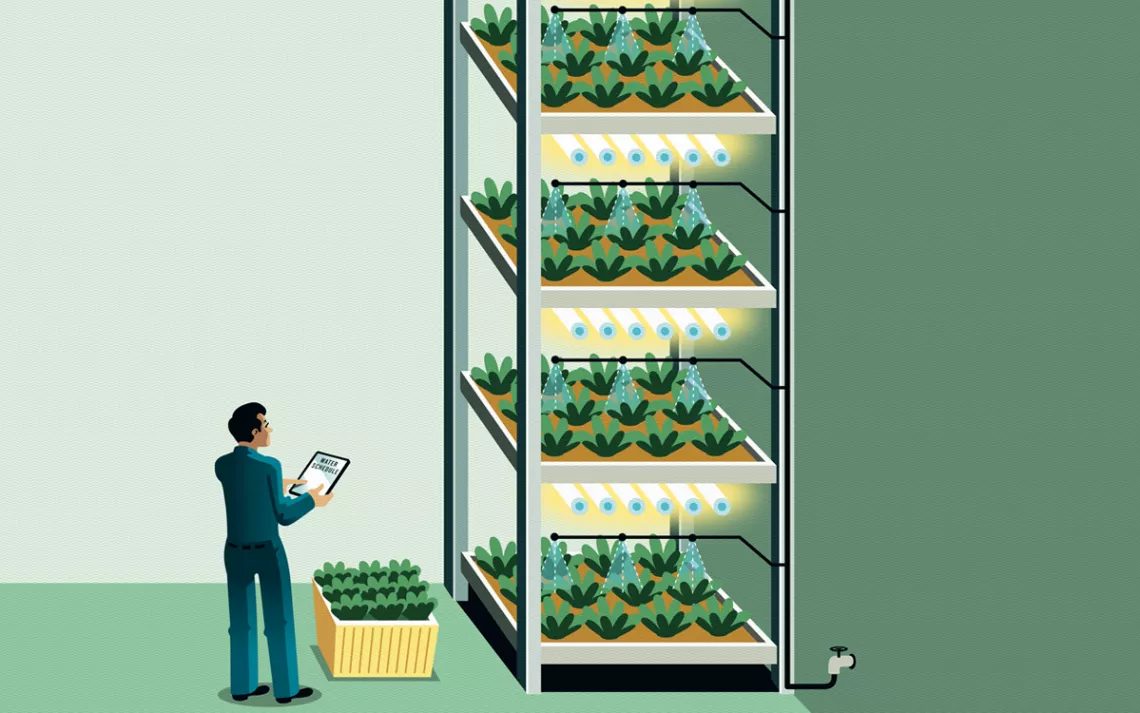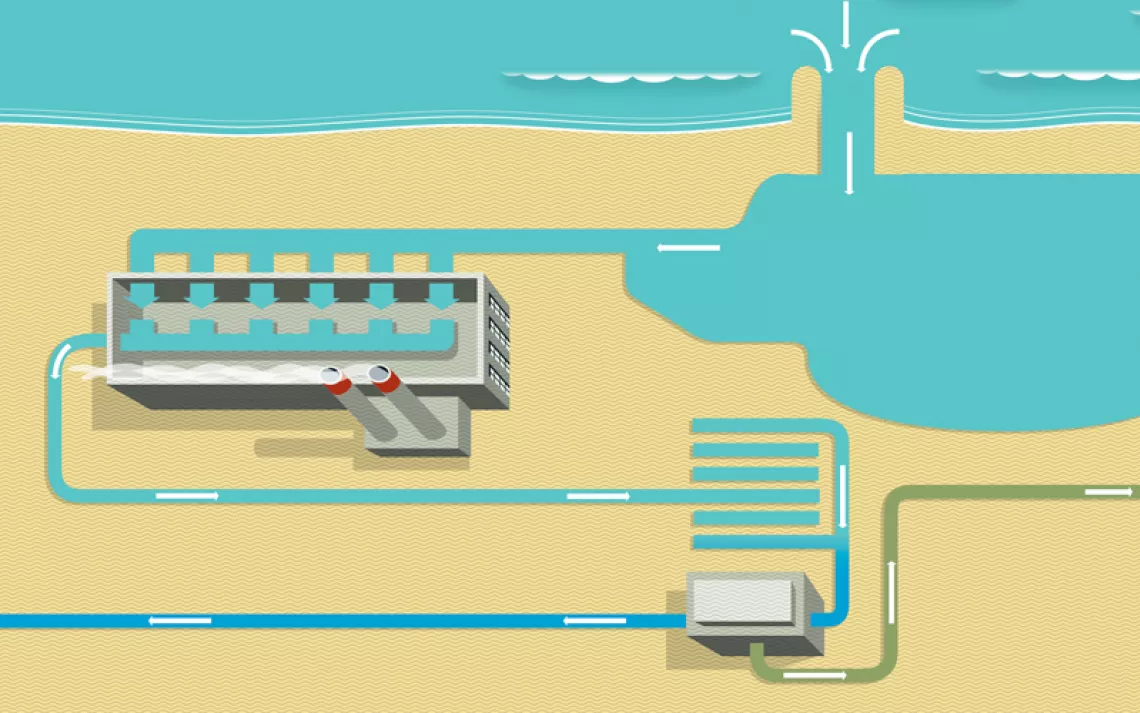Can Technology Outcompete the Sun?
How vertical farming measures up

Illustration by Peter and Maria Hoey
THE CLAIM
Vertical-farming start-ups like AeroFarms and Plenty say that they can re-localize the US food system by creating high-rise living for fruits and vegetables. These entrepreneurs outfit warehouses in formerly industrial areas near city centers with full-spectrum LED lighting and other high-tech indoor growing gear (as is already common with cannabis production) so they can grow produce year-round, regardless of seasonality and the increasingly unpredictable weather that comes with climate change.
WHAT COULD GO WRONG?
Farming is not an industry known for juicy profit margins. Despite having access to the sort of investment capital that many produce farmers only dream of (so far, Plenty has raised more than $500 million), several high-profile vertical-farming operations like Chicago's FarmedHere and Atlanta's PodPonics have already gone bust trying to farm the great indoors.
THE UPSHOT
Today, the only kinds of vertically farmed produce readily available in grocery stores are herbs, baby salad greens, and (rarely) strawberries—the same produce that sells for a premium when shipped in from warmer locales. Vertical produce is expensive too; it's just produced closer to home. The people who buy it tend to be those who are also willing to pay the big bucks for organic, locally grown salad in winter. This premium pricing is an important part of these start-ups' business plans (at least right now), but it makes vertical farming a luxury, not an agricultural game-changer.
Vertical farms ultimately dream of beating their competitors by being more profitable and sustainable. But going vertical requires infrastructure (plumbing, electricity, ventilation, walls, a roof) that is optional in other forms of farming. That's a lot of embodied energy. Even the greenest lighting installation can only aspire to carbon neutrality, for example, while photosynthesis is carbon negative.
In short, outcompeting nature is no cakewalk. Here's how vertical farms are doing so far against the competition.

Light
LEDs are cheap, but it's hard to compete with a flaming ball of incandescent gas when it comes to affordability and carbon emissions.

Water
Vertical farms have an advantage here: Because they're indoors, they can recycle water that would otherwise evaporate into the atmosphere.

Nutrients
Dirt is heavy and a potential source of bacteria, so vertical farms prefer to grow plants hydroponically, aeroponically, or aquaponically—which limits them to crops with shallow root systems.

Microbes and Fungi
Vertical farms can lock out the bugs, but a fungus that an outdoor plant would shake off could wipe out an entire indoor crop.
This article appeared in the Spring 2022 quarterly edition with the headline "Penthouse Produce."
 The Magazine of The Sierra Club
The Magazine of The Sierra Club



